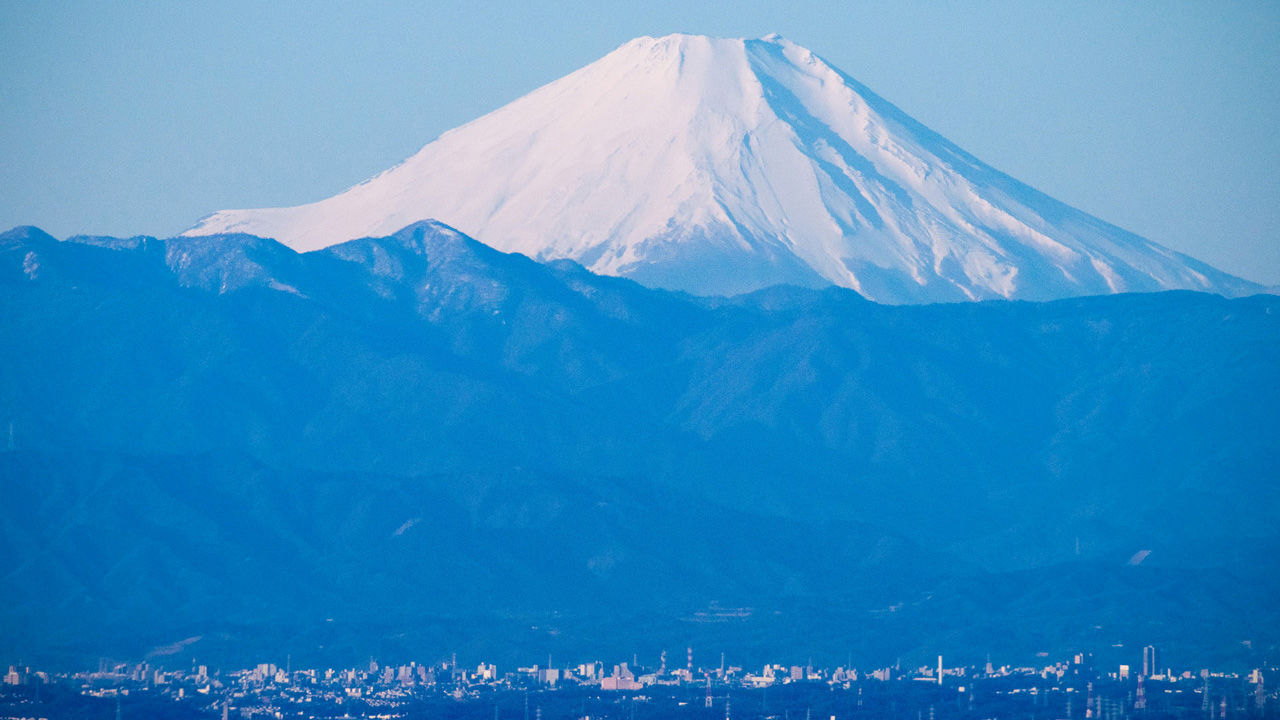
Seven Spots in Tokyo to Admire Mount Fuji
Guideto Japan
- English
- 日本語
- 简体字
- 繁體字
- Français
- Español
- العربية
- Русский
A Mountain Once Visible from Everywhere
The symmetric shape of Mount Fuji gives it a beautiful and majestic silhouette from all directions. The mountain has historic roots as an object of worship stemming from ancient times due to its prominence as Japan’s highest mountain. Registered as a UNESCO World Cultural Heritage site in 2013, the mountain is now a popular destination for tourists visiting Japan, and its name is recognized globally.
The ukiyo-e artists Katsushika Hokusai and Utagawa Hiroshige created numerous prints and paintings of Mount Fuji as seen from Edo, now Tokyo. To this day “Fuji” and “Fujimi,” meaning “viewing Fuji,” still remain in many of the place names within the city, making it evident that the mountain could be regarded from a multitude of locations in Tokyo not so long ago. However, as high-rise buildings have sprouted in recent times, good views have become more difficult to find.
Where are the spots we can still go to today to appreciate a view of Mount Fuji within Tokyo? We asked Tashiro Hiroshi, a “Fuji vista appraiser,” to pick some of the best locations for us.
Wakasu Seaside Park (Wakasu, Kōtō)
Tokyo Gate Bridge is known for its dynamic design, calling to mind two dinosaurs facing each other, and its great views. From Wakasu Seaside Park, you can admire the view of Mount Fuji framed by the bridge. This view is the same “Bridge view of Fuji” that is found in Katsushika Hokusai’s “Under Mannen Bridge at Fukagawa” in his collection titled Thirty-six Views of Mount Fuji. Twice a year, in February and October, the sun sets over the top of the mountain when viewed from just this angle to form what is called a “Diamond Fuji.”
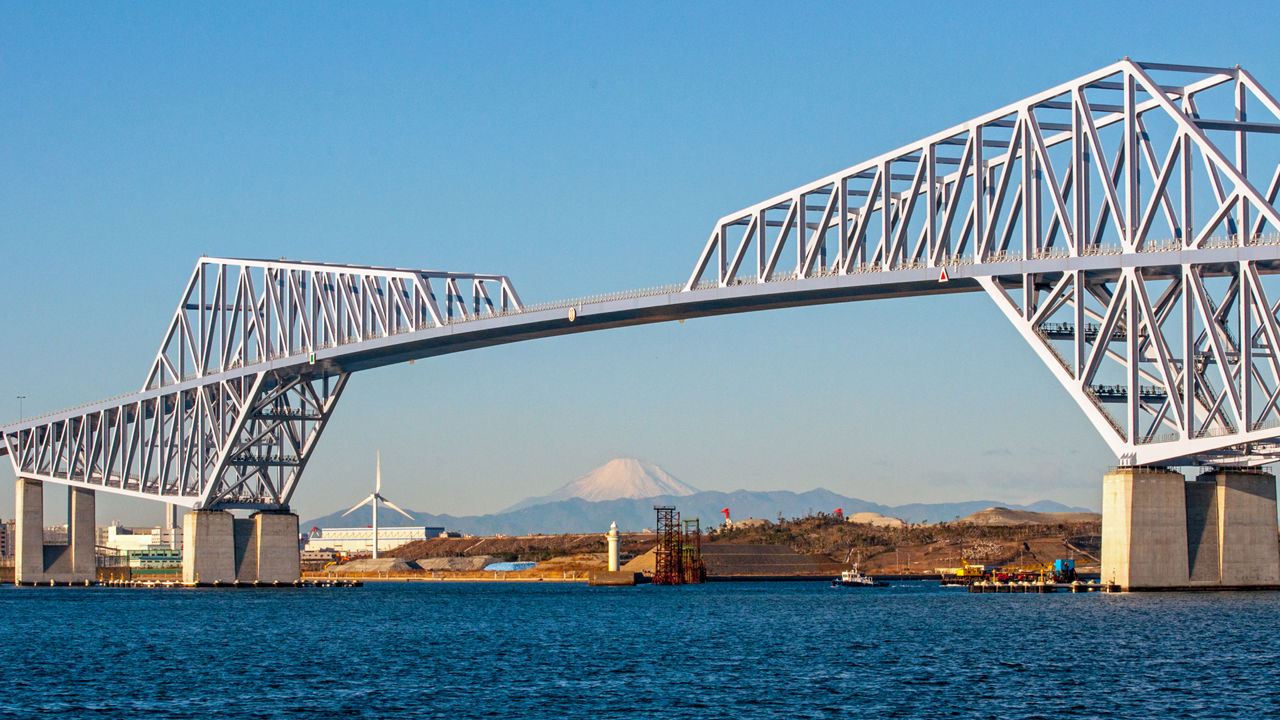 The park is big and it’s fun to move around while thinking about the positions of the piers in relation to Mount Fuji.
The park is big and it’s fun to move around while thinking about the positions of the piers in relation to Mount Fuji.
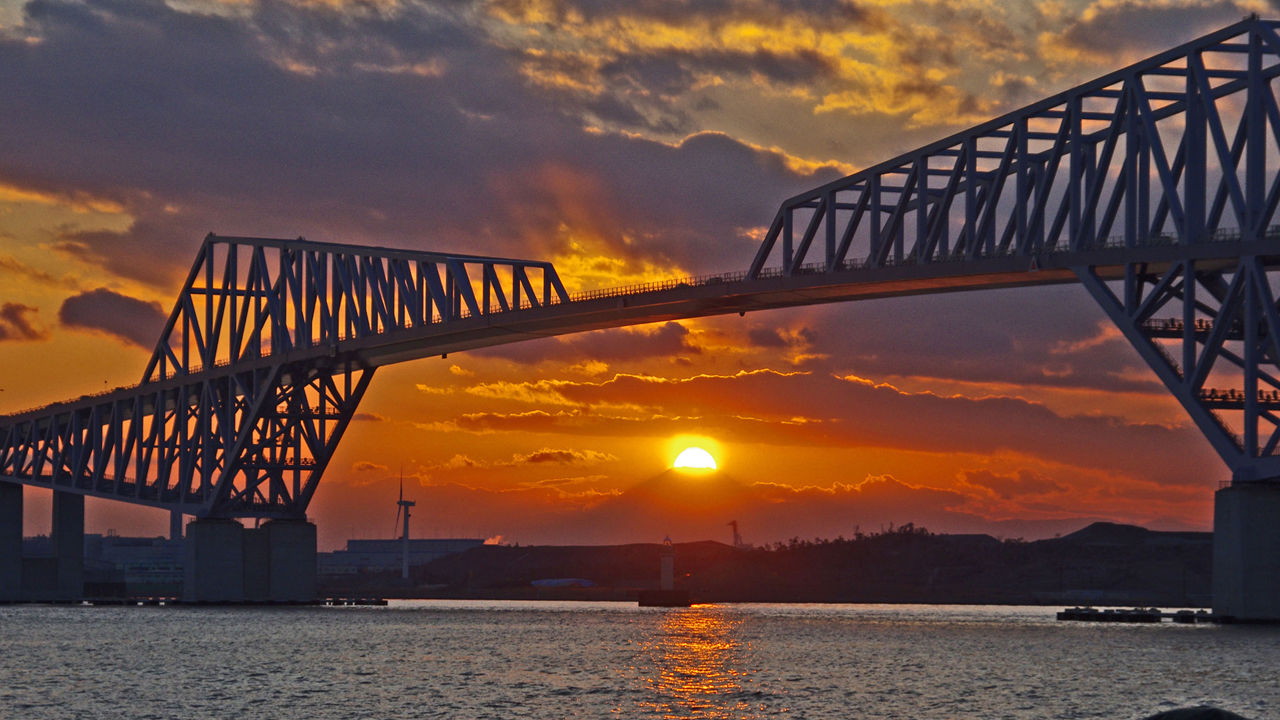 On the day of “Diamond Fuji,” the galleries are crowded. But getting a spot to take photos is not so difficult in the spacious Wakasu Seaside Park.
On the day of “Diamond Fuji,” the galleries are crowded. But getting a spot to take photos is not so difficult in the spacious Wakasu Seaside Park.
Tokyo Skytree (Oshiage, Sumida)
At Tokyo Skytree, which opened in 2012, Mount Fuji can be enjoyed from the highest vantage point of any Tokyo building. To guarantee the best possible chance at viewing the peak in all its splendor, it’s best to be there before 10:00 in the morning if possible. Skytree’s doors open at 8:00, which should make Fuji enthusiasts happy.
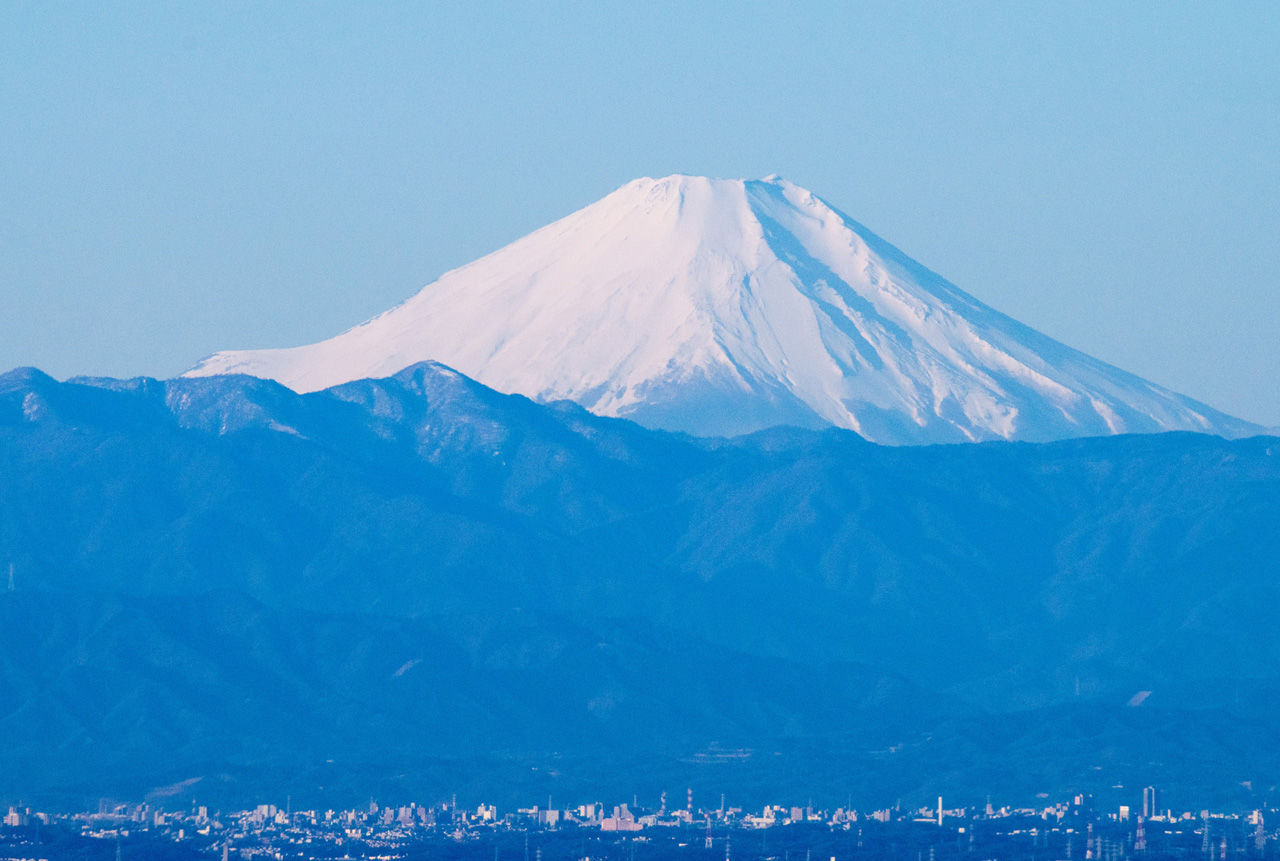 On the southeast side of Mount Fuji, the flank volcano Mount Hōei can also be clearly seen.
On the southeast side of Mount Fuji, the flank volcano Mount Hōei can also be clearly seen.
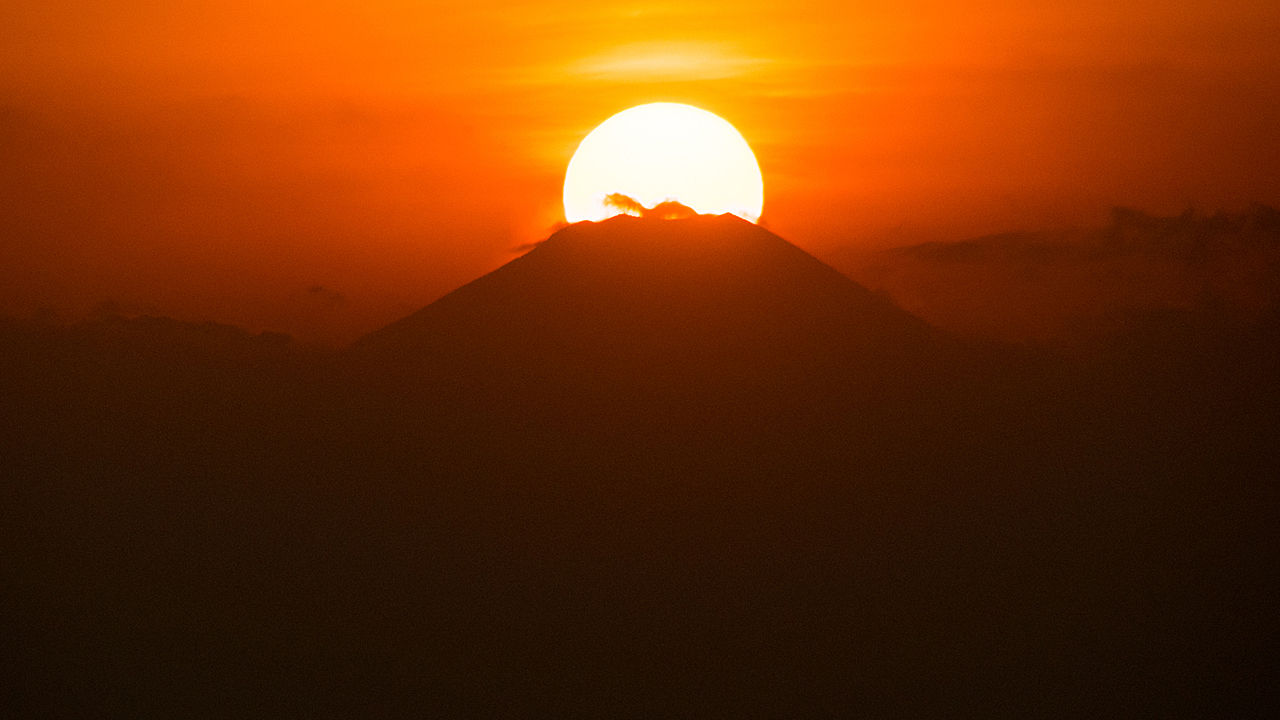 When viewed from Skytree, the width of the setting sun is slightly wider than the summit of Mount Fuji on “Diamond Fuji” days. From places like Landmark Tower in Yokohama, the sun sets and sits perfectly in the summit, making for a beautiful sight.
When viewed from Skytree, the width of the setting sun is slightly wider than the summit of Mount Fuji on “Diamond Fuji” days. From places like Landmark Tower in Yokohama, the sun sets and sits perfectly in the summit, making for a beautiful sight.
Tokyo Metropolitan Government Building (Nishi-Shinjuku, Shinjuku)
Countries that are able to admire their tallest mountains from their capitals are rare in the world. Many tourists visiting Japan visit the observation decks of the Tokyo Metropolitan Government Building because they are free to access and offer foreign-language guide service. However, the South observation room, which gives the best views of Fuji, is closed for renewal work from September 1, 2018, through the spring of 2019.
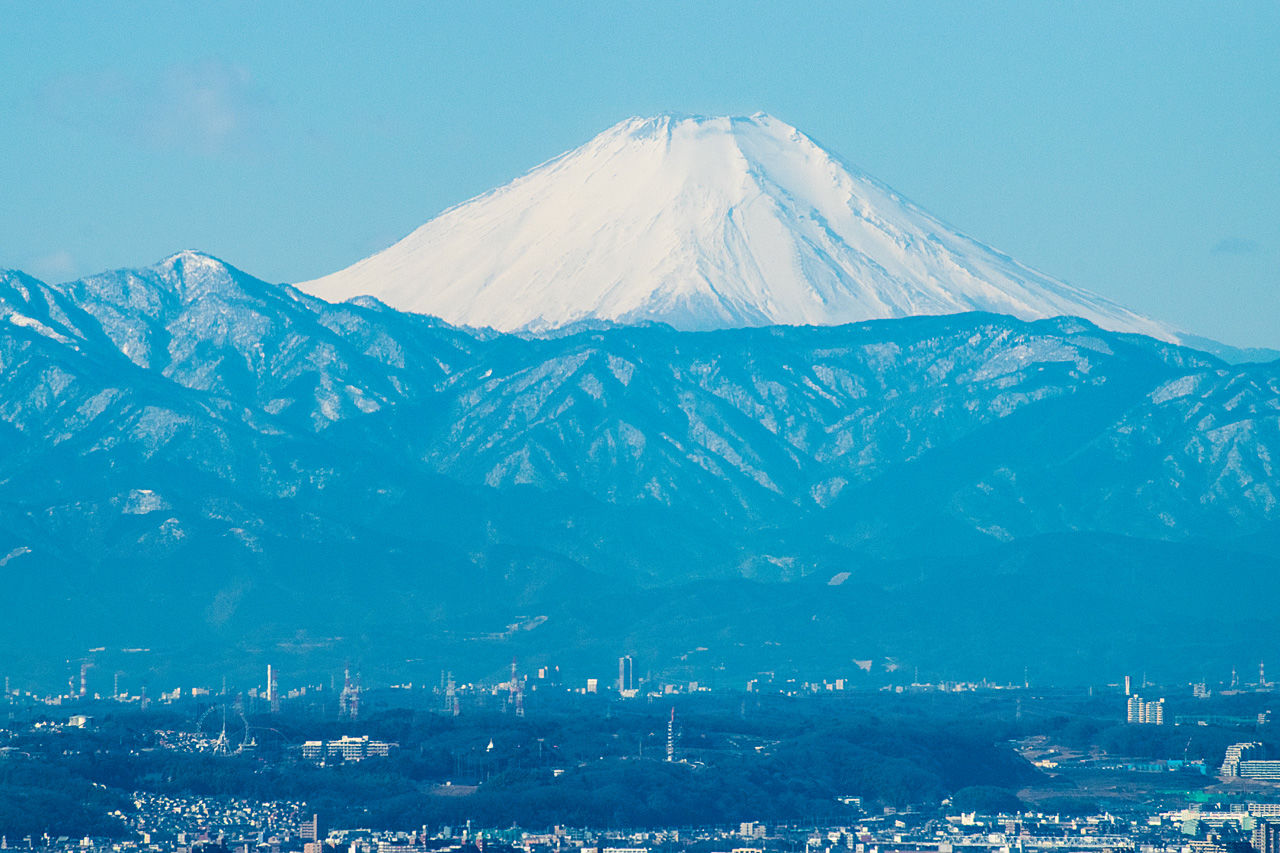 Majestic Mount Fuji from the Tokyo Metropolitan Government Building. The winter months of December–February are recommended for viewing Fuji from Tokyo because the air is clear thanks to the low temperature and humidity, making for great visibility.
Majestic Mount Fuji from the Tokyo Metropolitan Government Building. The winter months of December–February are recommended for viewing Fuji from Tokyo because the air is clear thanks to the low temperature and humidity, making for great visibility.
Tower Hall Funabori (Funabori, Edogawa)
This facility in Edogawa has a hall for large-scale events and concerts and includes a 115-meter-high observation room. Although it’s only a one-minute walk from Funabori Station on the Toei Shinjuku Line, it's a little-known gem for viewing Mount Fuji. With a highway directly in front and clusters of skyscrapers spanning the metropolis of Tokyo, Mount Fuji majestically rises up behind the vista laid out before you.
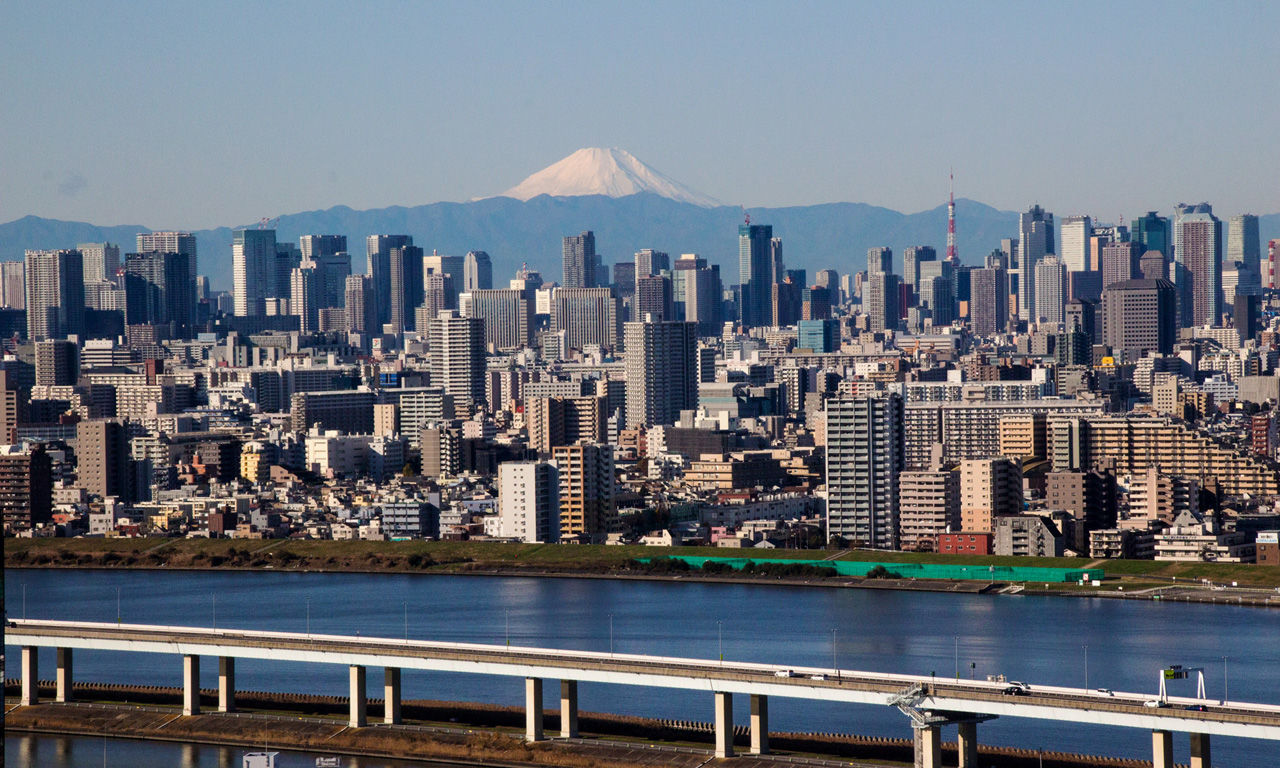 Mountain, metropolis, and one of Tokyo’s main rivers, all in one photo.
Mountain, metropolis, and one of Tokyo’s main rivers, all in one photo.
Haneda Airport (Haneda, Ōta)
There is a view worth seeking out at the International Passenger Terminal’s Fujimidai observation deck. From this unique vantage point, Mount Fuji seemingly stretches into the heavens from behind the Mount Ōyama ridgeline of the Tanzawa mountain range. It is a special place where visitors to Japan entering through Haneda, as well as Japanese returning from abroad, can see Fuji right away, reinforcing the feeling of truly having arrived in Japan.
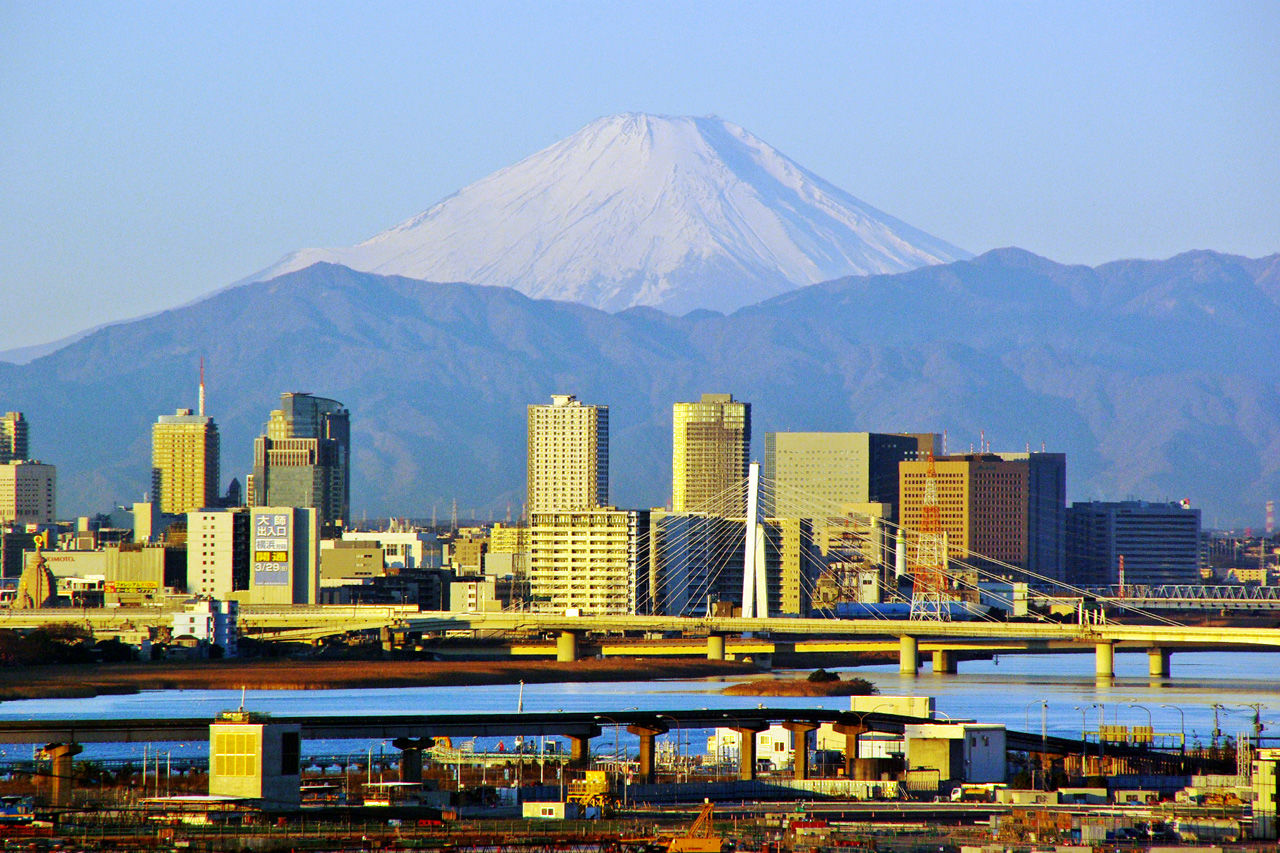 Snap your photo with the monorail in frame for even more depth and appeal.
Snap your photo with the monorail in frame for even more depth and appeal.
Carrot Tower (Sangenjaya, Setagaya)
Because it is a little far out from the city center on the west side, it features a view that is unblocked by buildings. Hirugatake (altitude 1,673 m) is the highest peak in the Tanzawa mountain range, and also the highest peak in Kanagawa Prefecture. It is visible right below Mount Fuji. Fuji peeks out just above it. A “Diamond Fuji” shot is also possible from here.
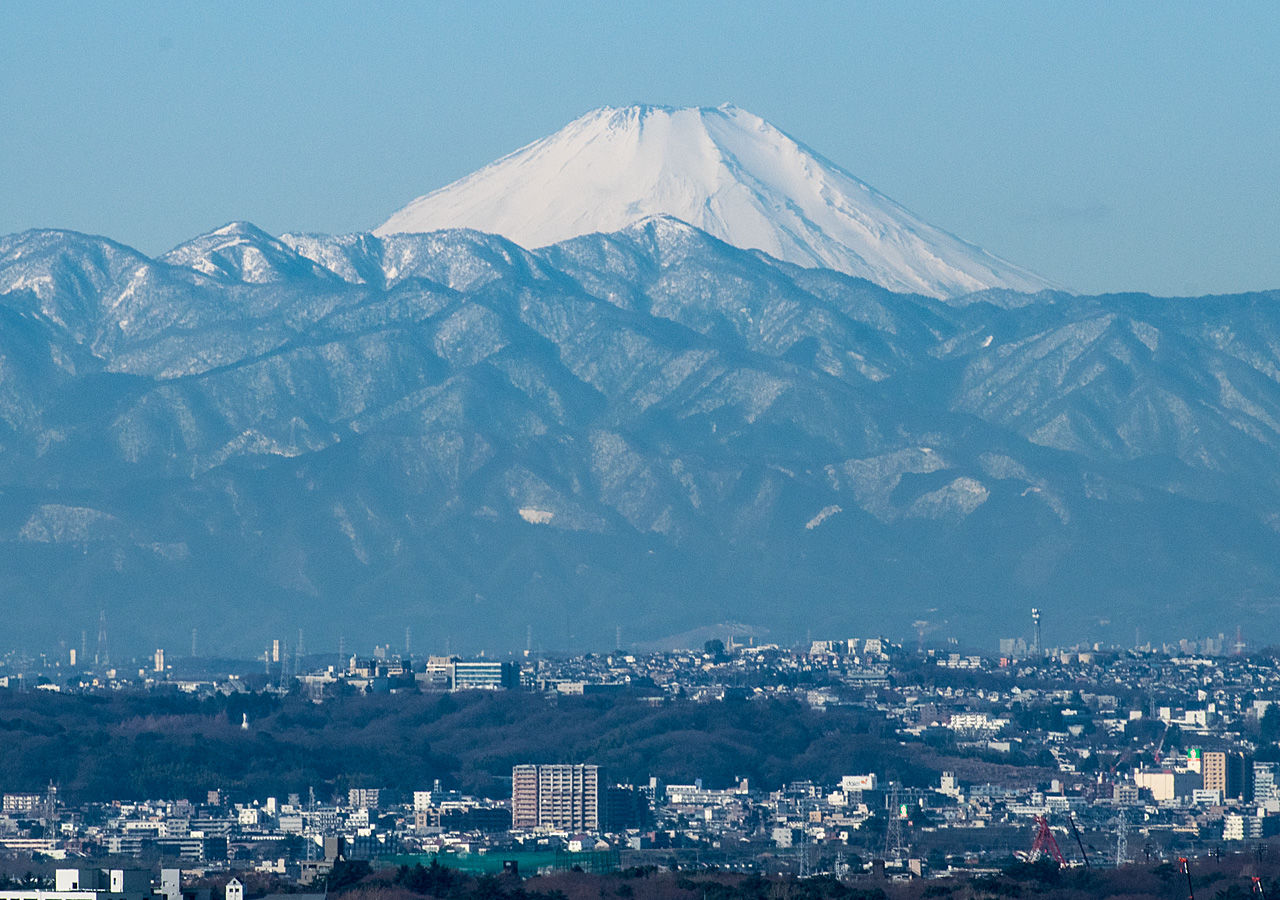 A “Mount Fuji maniac” will be able to tell the direction from which you viewed the peak by which peak of the Tanzawa mountain range was in the foreground.
A “Mount Fuji maniac” will be able to tell the direction from which you viewed the peak by which peak of the Tanzawa mountain range was in the foreground.
Seijō and Fujimi Bridge (Seijō, Setagaya)
Fujimi Bridge and Fudō Bridge, two bridges over the Odakyū Line tracks, have been selected as two of the “100 Views of Setagaya,” the most populous city in the metropolis.
Viewed through the frame provided at Fujimi Bridge, Mount Fuji looks as though it is shown in a photograph, giving photographers what they often call a “picture-frame Fuji.”
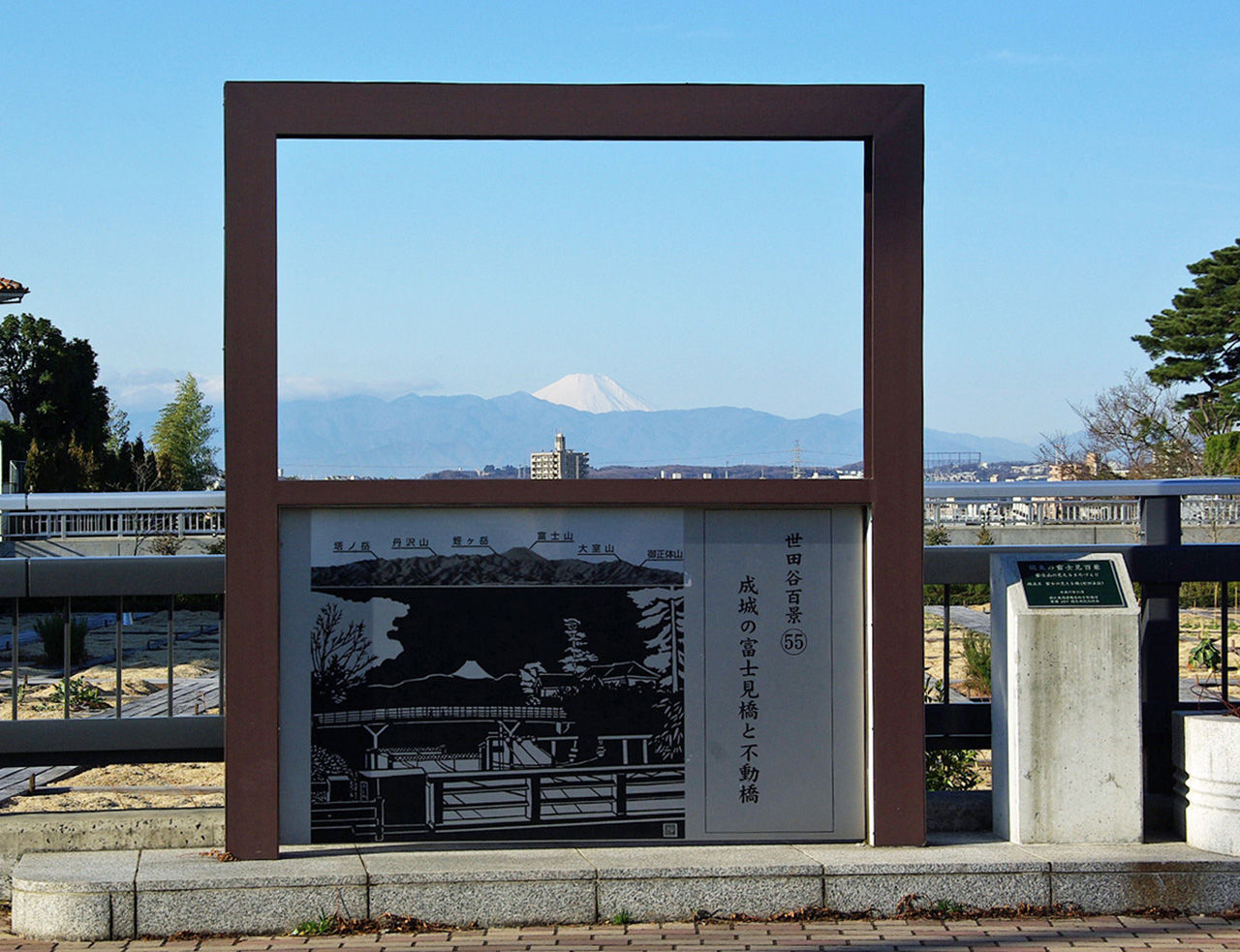 As there’s limited room to shoot a photo like this, with just about enough space for two people, you’ll need to get there early to secure your spot.
As there’s limited room to shoot a photo like this, with just about enough space for two people, you’ll need to get there early to secure your spot.
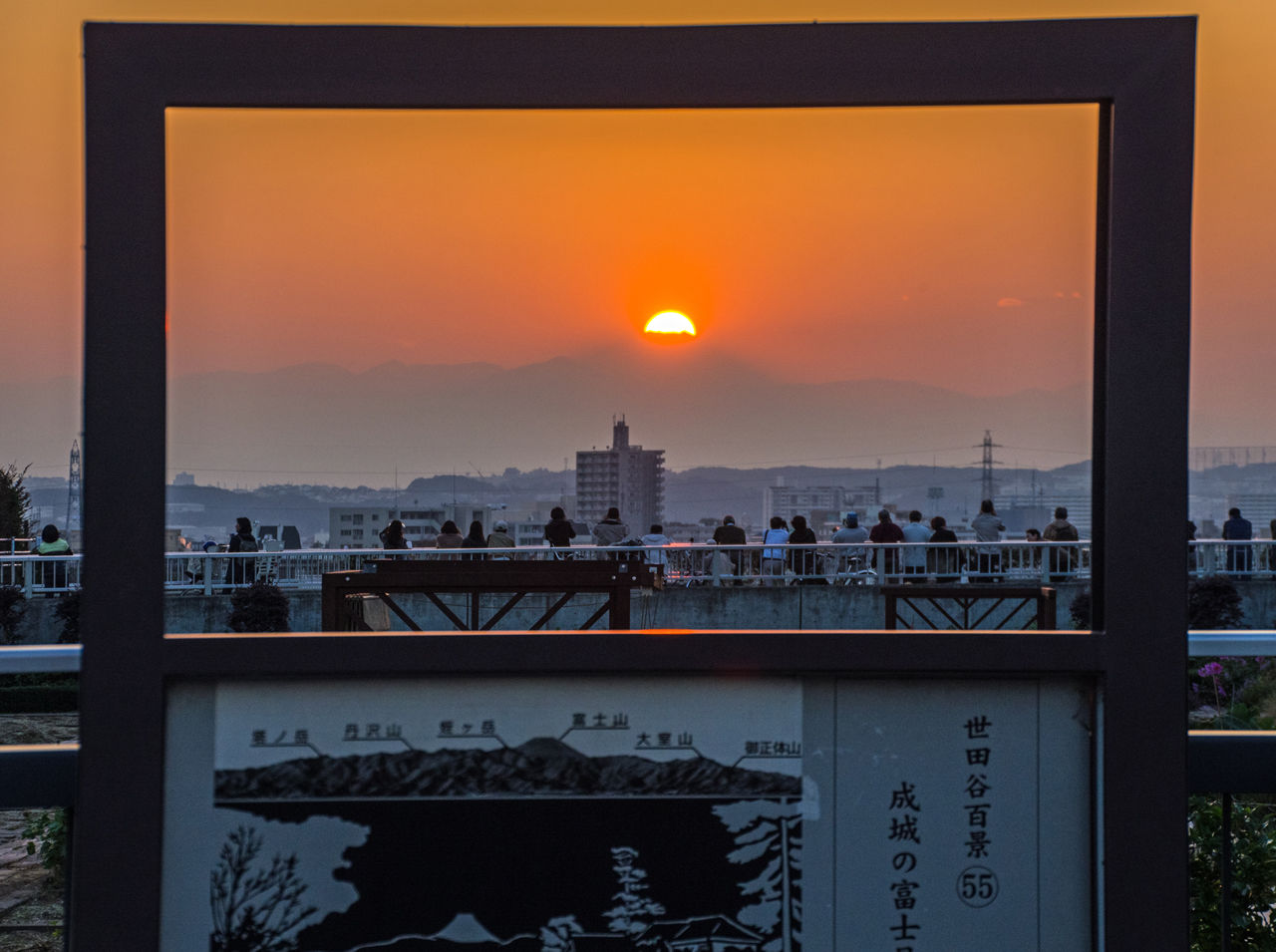 A Diamond Fuji photo with people gazing at Fuji from Fudō Bridge in the frame’s foreground.
A Diamond Fuji photo with people gazing at Fuji from Fudō Bridge in the frame’s foreground.
(Originally published in Japanese on June 20, 2018. Text and photographs by Tashiro Hiroshi.)
Tashiro Hiroshi
Born 1950 in Hiroshima. Advisor for the Japan Map Center. He has made it his life's work to create mountain peak viewing maps and mapping areas from which Mount Fuji can be seen. He has written extensively on Mount Fuji, and countless works have appeared in a variety of media in his capacity as a Fuji vista appraiser. His website (Japanese language only) is http://yamao.lolipop.jp/.